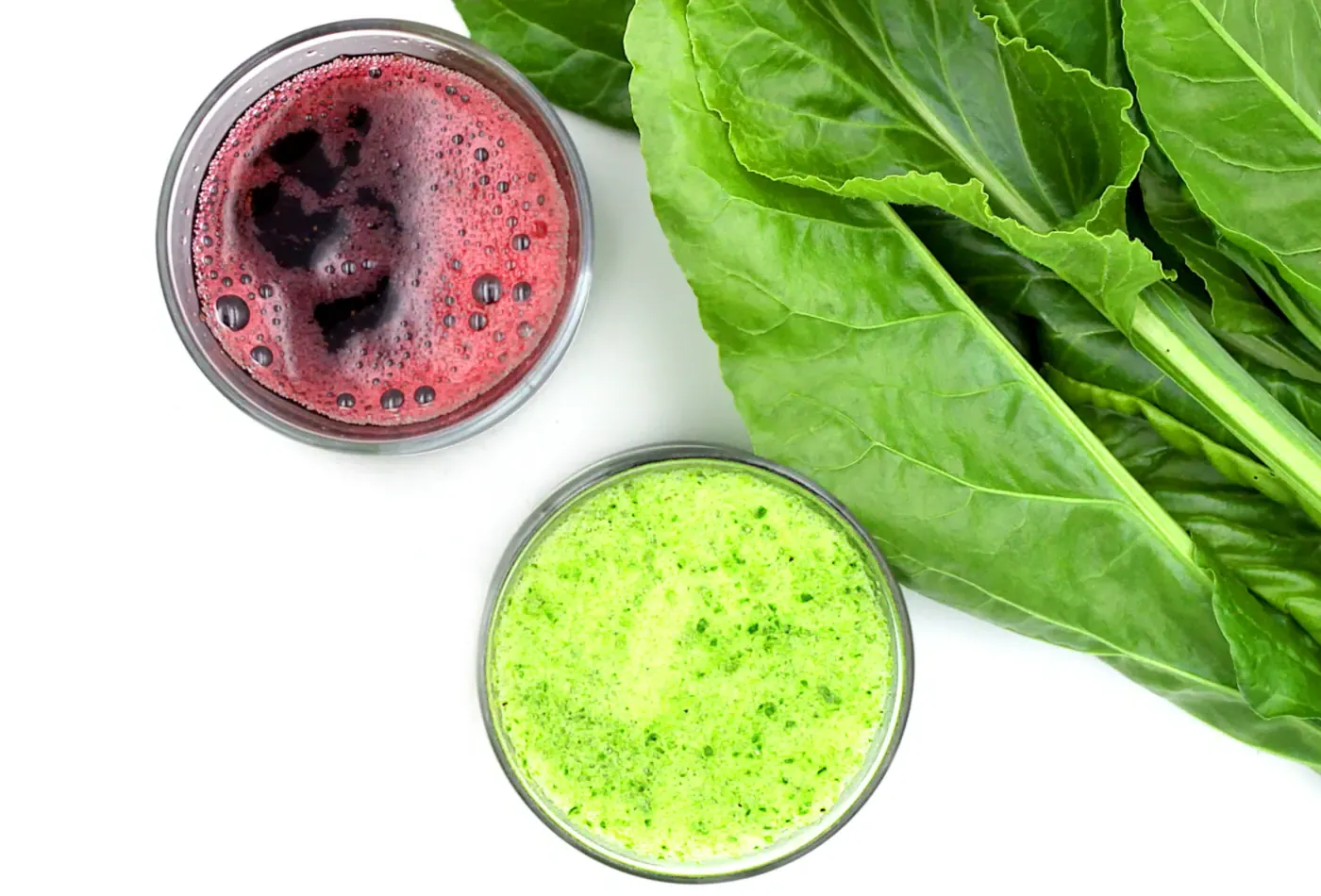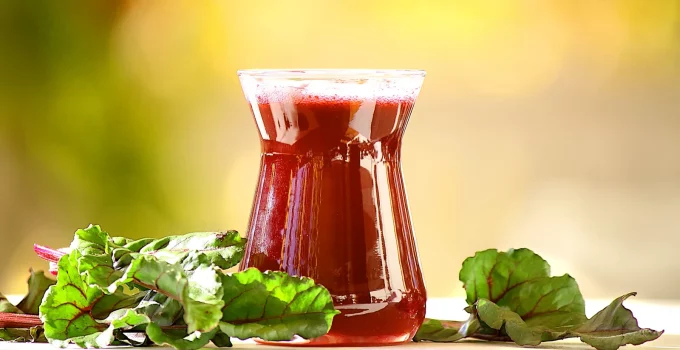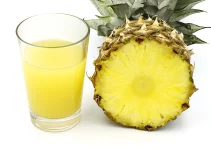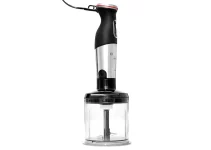When we’re looking for the best juicer for beets, we’re going to have a lot of options to choose from. The amazing thing about juicing beets (beetroots) is that these root vegetables are very easy to juice.
Why do I say that it’s easy to juice beetroots?
That’s because of their texture. Raw beets are very hard, crunchy, and they’re often compared to carrots. That’s why people might also be looking for the best juicer for beets and carrots. They’re in the same category when it comes to texture. Check out my reviews for the best blender for carrots if you want to make smoothies instead.
Both centrifugal and masticating juicers can juice a lot more successfully fruits and veggies that have a hard texture, like beetroots, carrots, apples, ginger, etc. And that have pretty decent sizes that can be chopped into large chunks. If the feed chute of your juicer is big enough, you might not even need to cut most of your veggies and fruits.
On the other hand, the most difficult ingredients to juice are berries because they’re very small and leafy greens that don’t have large stems. The stems are more successfully juiced than the leaves. So, herbs won’t add a big quantity of juice to our glass or container. The same can apply if we’re juicing baby spinach.
On the other hand, if you’re looking for the best juicer for beets we won’t have such reservations.
You can be totally sure that you’ll obtain the maximum beet juice quantity without any problems.
And pretty much any good juicer, whether centrifugal or masticating, will do a wonderful job.
What I also want to mention is that we can also juice beet greens, the beet leaves with their stem if you prefer it that way.
Table of Contents
Best Juicer for Beets Reviews

One of my top favorites is the Hamilton Beach Juicer Machine. There are a few reasons for preferring this one as my top pick for the best juicer for beets, including the overall quality of this model, its versatility and capabilities to easily and fast juice large quantities of different fruits and veggies, and the very affordable price.
It’s one of the cheapest juicers, with a price well under $100, that we can buy and hope that it will last for years to come.
The Hamilton Beach Juicer Machine is a centrifugal juicer and it’s one of the best centrifugal juicers we could buy. It was also a top recommendation when I wrote my reviews for the best grape juicer.
Breville also makes some interesting centrifugal juicers but they’re really expensive. And they’re not exactly my top favorite.
Speaking of expensive juicers, if you can afford it, masticating juicers can be an amazing choice.
Models like the Omega NC900 Cold Press Juicer Machine and the Tribest Greenstar GSE-5050 Elite Slow Masticating Juicer are amazing picks as the best juicer for beets and carrots and so many other fruits and veggies.
The Ninja JC151 NeverClog Cold Press Juicer, 2nd Generation is my top recommendation if you’re looking for a masticating juicer that costs under $150. We don’t necessarily have to spend $300-$600 if masticating is our preferred choice. There are much cheaper alternatives, like the Ninja JC151.
1. Hamilton Beach Juicer Machine: Overall the Best Juicer for Beets
When I read the description for the Hamilton Beach Juicer Machine, I came across this: 800w of power can turn a dense beet into smooth juice in seconds.
That’s a good omen.
In fact, the Hamilton Beach Juicer Machine is one appliance that I’m very well acquainted with and one of my top favorites.
When I recommend and review other appliances, like air fryers or rice cookers or even raclette grills, I am forced to recommend pretty expensive appliances and cookware as my top picks because those are truly among the best.
However, my search for the best juicer for beets is an exception. The Hamilton Beach Juicer Machine is among the cheapest juicers that we could buy.
At the same time, it’s also among my favorites.
Of course, I’m aware that not everyone will love this one. And that’s perfectly fine because I have so many other models to review.
Centrifugal juicer
One easily identifiable category of people who might not prefer the Hamilton Beach Juicer Machine is represented by buyers who absolutely only want a masticating juicer as the best juicer for beets.
This one is a centrifugal model. Let’s see what that means.
By the way, if you want a masticating model but you’re on a budget under $150 so you can’t go for Omega or Tribest, then you should check out the Ninja JC151 NeverClog Cold Press Juicer, 2nd Generation. It’s pretty nice.
Centrifugal models are still some of the most popular models even now.
That’s because they’re very fast so we can drink a juice in a minute in the morning.
And they’re very cheap, while being easy to use, relatively easy to clean, and quite efficient.
For example, I would recommend this Hamilton Beach whether you want to juice beets and carrots, apples and ginger, tomatoes, pineapples, citrus fruits, kale, leafy greens, cauliflower, etc.
It’s versatile, while the price makes it accessible to so many potential buyers that want to embark on a new journey of enjoying veggies and fruits in many different ways.
One thing that might put people off from going for centrifugal models is that they’re very loud.
Masticating models are the ones you need to look at if you don’t like loud appliances and you don’t mind that they’re slower.
Centrifugal models use powerful motors that make the blades (shredder) tear and shred ingredients in order to release their juice. Then, the juice is pulled by centrifugal force through a fine mesh wrap (strainer) and ends up in our glasses.
If the pulp that is sent to the pulp container is too wet, which can definitely happen with centrifugal models, juice it a second time to extract everything.
Features
The only thing that it lacks is a juice cup. So, we get a pulp container but no container to catch the juice.
So, you’ll have to use your own container or glasses or whatever you prefer.
Besides that, we get all the necessary components, including an extra-wide feed chute , a food pusher, and a large pulp container.
The large pulp container is big enough for making a decent quantity of juice before you have to empty it so I like that.
In the case of centrifugal models, like this Hamilton Beach, the pulp might come out a bit wet.
You can juice it again if you feel that it’s not as dry as it should be. I totally recommend it.
There’s also a cleaning brush included.
There are instructions in the user manual about how to disassemble and assemble it.
The extra-large 3-inch feed chute fits whole fruits and vegetables which makes prep a breeze. In a couple of minutes we can drink whatever juice we want in the morning.
It will fit a whole apple, a peeled orange or a handful of kale.
Juicers like this Hamilton Beach might be loud but they’re quick. Masticating models are slow but quiet.
I totally think that the Hamilton Beach Juicer Machine is a top pick for beginners, whether they want to juice beetroots, beet greens, kale, pineapple, apples, tomatoes, citrus fruits, spinach, etc.
And, obviously, it’s a great choice for people on a budget who don’t necessarily look for a masticating model.
It’s also one of the best juicers for tomatoes if you don’t plan on canning hundreds of pounds of tomatoes.
Making soy, almond, and rice milk
We can use a juicer to make soy milk, almond milk, and rice milk.
There are some quick instructions in the user manual.
One cup of soybeans, almonds or rice must be soaked in 4 cups of water for 24-48 hours in the refrigerator.
Pour one cup at a time of the soaked nuts and grains into the food chute.
Soy milk should be boiled to improve the flavor.
2. Ninja JC151 NeverClog Cold Press Juicer, 2nd Generation: Best Value for Money
In my opinion, if you want a masticating juicer that cost less than $150, your best pick is the Ninja JC151 NeverClog Cold Press Juicer, 2nd Generation.
Personally, I absolutely love it. I think that it’s absolutely amazing for those on a budget. Also, for beginners who are looking for the best juicer for beets but don’t have $300 or more to spend on one.
Moreover, if the Hamilton Beach Juicer Machine is not the right pick for you, the Ninja JC151 can work as the perfect alternative.
Before this 2nd generation model, there was the 1st generation, the Ninja JC101. I wasn’t a big fan of that one.
However, Ninja proves that it listened to previous buyers who complained about the previous one getting clogged. And they made the Ninja JC151. They named it the NeverClog Cold Press Juicer to demonstrate that they understood where they failed people. I appreciate that.
While this 2nd generation model is more expensive than the previous 1st generation, I believe that the price is well worth it. We’ll get good value for money.
I totally love the design. I love how small it is and I think it would fit very well in small kitchens. It’s quite pretty and I don’t think that of most juicers, no matter how capable they are.
It absolutely was among my top recommendations for the best juicer for pineapple, as well.
Features
The Ninja JC151 NeverClog Cold Press Juicer, 2nd Generation is a masticating juicer that minimizes heat when squeezing out the juice in order to better preserve its nutrients and vitamins.
The 9-segment auger produces more juice, less foam, and brighter colors than leading centrifugal juicers.
On the other hand, the only thing is that it has a pretty small feed chute so you’ll have to cut ingredients into smaller chunks so food prep will take a bit longer.
There are only 2 buttons: stop/start and reverse.
It includes a juice container and a pulp container. They’re pretty small because this whole Ninja is quite small.
We actually get two interchangeable pulp filters. We get total pulp control, whether we want less pulp or lots of pulp. I like that, it’s like making a smoothie in a juicer, which is fantastic. I like pulp.
We also get a tamper.
There are also plenty of YouTube videos that show how well it works.
I’m glad to see that one of my favorite air fryer brands makes an awesome juicer, too.
3. Omega NC900 Cold Press Juicer Machine: Overall the Best Masticating Juicer for Beets
I am entirely aware just how expensive the Omega NC900 Cold Press Juicer Machine is.
The price around $400-$450 is among the most expensive.
However, I also believe that if you’re willing to invest a good deal of money in a masticating juicer, then my top recommendation would be the Omega NC900.
However, I should also mention that it’s not a perfect product. It has some negative reviews and I think you should read a few of those, as well, before eventually deciding which is the best juicer for beets for you.
Masticating juicer
One thing that makes people prefer masticating models is the fact that they extract the juice from ingredients without generating heat or friction.
The ingredients are slowly grinded and crushed with an auger. And then the juice is forced through a fine strainer.
Thus, it is considered that nutrients are preserved better than if we’re using a centrifugal model.
Centrifugal models add oxygen to juices. It makes them a little frothy. And it also means that we should consume the extracted juice sooner rather than later. It can be stored in the fridge for up to 24 hours.
In the case of juice from masticating models, we can store it in the fridge for 2-3 days.
Features
It operates at a slow 80 RPM.
That means two things: the noise it makes is low and the slow speed minimizes heat buildup and oxidation.
That promotes maximum nutrient extraction and healthy enzymes. You can store the juice in the fridge for up to 3 days just make sure to store it in a container with a lid or in jars.
However, just because it moves slowly doesn’t mean that it’s not powerful.
It is equipped with a powerful but quiet gear reduction equivalent to a 2HP motor. It’s very powerful, it generates enough torque to process tough ingredients.
The Omega NC900 uses triple-stage masticating technology. The auger looks great, it’s called a 3-stage auger.
It also has 5 pressure settings (adjustable pressure cap) for ensuring maximum juice output and extraction, while preserving nutrients, vitamins and flavors.
The Omega NC900 comes with a pulp container, juice container, cleaning brush, and food pusher.
Both containers have a decent size.
More than a juicer
Of course, most of us are going to use this Omega as a juicer for beets and many other fruits and veggies.
But it can also be used to make other things.
We can use the Omega NC900 for: baby food, nut milks, nut butters, frozen fruit sorbets, pasta, minced herbs, and ground beans.
It includes the following extra accessories: 3 pasta nozzles and 1 breadstick nozzle.
Plus, in order to make all these things, we need to pay attention to which strainer we’re using.
There are 2 strainers to choose from: juicing strainer and processing strainer. The user manual contains all this info we need.
We get chapters on how to prepare: fruits and vegetables, wheatgrass and greens, mincing and chopping, nut butters, nuts and soy milks, deserts, baby food, coffee grinds, pasta and breadsticks.
There are also recipes for: almond milk, soy milk, peanut butter, cookie dough nut butter, homemade pasta, eggless pasta, breadsticks, salsa in a glass, baby food – applesauce, sweet potato, carrots, peas, and some very delicious juice recipes.
The one called Australian dream is made with: 2 beets, 2 carrots, 1 cup strawberries, 2 cups kale.
All in all the Omega NC900 is a top pick as the best juicer for beets, very complex, versatile but expensive.
4. Breville Juice Fountain Cold XL Juicer
In my opinion, the best way to describe the Breville Juice Fountain Cold Juicer is to say that it’s a combination between a centrifugal and a masticating juicer.
It’s a highly interesting appliance that has the high speed of a centrifugal model while it strives to preserve nutrients and vitamins as well as a masticating model.
It’s very fast but the cold extraction system manages to avoid damage to vitamins and minerals from heat and processing.
Thus, while the Breville Juice Fountain Cold XL Juicer is a pretty expensive pick as the best juicer for beets, it’s also a highly interesting one.
I should also mention that it’s also quite highly rated. Although, there are some users who complain that the pulp is a bit too wet.
That can happen with centrifugal models, I also mentioned this for the Hamilton Beach Juicer Machine.
My advice is this: if the pulp is too wet, juice it a second time.
Other buyers might complain about too much foam. That’s another thing that can happen when we’re using a centrifugal model.
Overall, I really like the Breville Juice Fountain Cold XL Juicer and it could be a fabulous juicer for people who can afford it.
Features
I love the 3.5 inch feed chute. It will mean that we have to do minimal prep so we can move very fast even if we make our juice fresh in the mornings before leaving the house in a few minutes.
Breville also mentions that it can extract 70 fl oz of nutrient rich juice up to 5 times faster than a cold press machine.
Of course that’s the case since this is a centrifugal juicer with the Cold Spin Technology and Noise Reduction Technology to incorporate characteristics of a masticating model.
The Cold Spin Technology and an Italian-made precision mesh filter allows us to avoid damage to vitamins and minerals from heat and processing.
I also love the big size of the pulp and juice containers.
We can seal the XL 70 fl oz jug and store in the fridge for up to 3 days.
The recipe book for the Breville Juice Fountain Cold XL Juicer is gorgeous.
We get a bunch of interesting juice recipes and each recipe features ingredients for both 2 cups and 1 jug.
One of those is called Blues Beets. It’s made with blueberries, beet(s), zucchini(s), and pears.
Another one is Purple Haze made with: beets, kale, grapes, and apples.
There aren’t all that many recipes but those that are included are very nice.
5. Tribest Greenstar GSE-5050 Elite Slow Masticating Juicer
And the award for the most expensive, best juicer for beets goes to Tribest.
When I wrote an article looking for the most expensive air fryers, I enjoyed myself because most of the time I’m trying to find a balance between affordable and expensive appliances. Just like I did here.
Well, the affordable options are not that many and I only truly love the Hamilton Beach Juicer Machine when it comes to a decently priced model.
I also love quite a lot the affordable Ninja JC151 NeverClog Cold Press Juicer, 2nd Generation.
What I’m trying to say is that I’m going to enjoy reviewing the Tribest Greenstar GSE-5050 Elite Slow Masticating Juicer but I’m going to prefer the Omega NC900 over it because this Tribest is outrageously expensive.
Moreover, it features a pretty high percentage of negative reviews. Those negative reviews feature some serious complaints so make sure to check out a few of those.
Features
What is impressive about this Tribest is the stainless steel twin gears, meaning it has 2 augers.
It rotates at 110 RPM in order to generate minimal heat when juicing to preserve nutrients as much as it can.
The Jumbo Twin Gears produces fresher juice that can be stored for longer with minimal loss of enzymes and vitamins.
It’s also meant for higher yields.
The glass juice pitcher is pretty small.
More than a juicer
Just like the Omega that I reviewed above, this Tribest is also capable of more than juicing.
It includes homogenizing accessories that turn it into a versatile kitchen tool, which means that we can make fruit sorbets and nut butters, sauces and pates.
However, the pasta maker set is optional. So we don’t get to make pasta with Tribest like we do with Omega unless we buy separately the pasta maker set that consists of: pasta screen, pasta screw, pasta guide.
You can also visit their website if you want to discover an entire universe of recipes.
6. Jocuu Slow Masticating Juicer: Cheap Masticating Juicer for Beets
Since we started our reviews for the best juicer for beets with a very affordable centrifugal model from Hamilton Beach, I thought that it would be only fair if we also reviewed its counterpart in the other category. And end my reviews with another affordable pick.
However, when it comes to affordable masticating juicers for beets and all the other fruits and veggies, I totally prefer the Ninja JC151 NeverClog Cold Press Juicer, 2nd Generation. There’s nothing better and the one from Ninja is definitely above Jocuu in both my preference and overall capabilities and built quality.
This Jocuu is still about 2 times more expensive than the Hamilton Beach that I reviewed above but it’s absolutely cheap for masticating models.
Just look at the prices for Omega and Tribest if you want a comparison. Both Omega and Tribest make some amazing appliances that you should definitely check out if your budget is above $300.
Features
There are two speeds: soft and hard.
The soft speed is for soft fruits: watermelon, oranges, grapes, celery, etc.
The hard speed is for: beets, carrots, apples, ginger, etc.
This Jocuu comes with a 9-segment spiral system (auger). The manufacturer mentions that this slow system of grinding and crushing the ingredients maintains 95% of the nutritional value and reduces foam.
It runs less than 60 decibels.
One small con that I could mention about this Jocuu is that the containers for both the juice and the pulp are pretty small.
Well, a masticating juicer doesn’t move all that fast so you’ll have plenty of time to empty both the juice and pulp containers and continue making juice for as long as you want.
The max capacity for the juice jug is 24 oz (700mL).
I should also mention that this Jocuu comes with a pretty high percentage of negative reviews. Make sure to check a few of those out.
How to make beet juice in a juicer
If you want a visual guide, I recommend watching this YouTube video. It also includes a nice beet juice recipe with apples, carrots, ginger, beets, and some leafy greens.
Thus, we can make a beet juice with just beets and their beet greens if you want to use the whole plant and its root.
The yield for beetroots is pretty good: we should extract six to seven ounces of juice per pound.
Or you can make a beet juice with other ingredients added in the mix, as well. I’ll recommend a few beet juice recipes down below.
Juicing beets is truly amazingly easy.
Use a vegetable brush
The first step is to wash our beets very well because these are root vegetables, which means that they are grown underground. So they can have a bit of dirt on them.
Some people might prefer using a vegetable brush. I also recommend using one if you can to make sure that your veggie roots don’t have any dirt sticking to their skin.
Use a vegetable brush to clean beets and carrots.
Is it necessary to peel beets?
Once they’re squeaky clean, there’s the question of whether you should peel beetroots before juicing.
I grow my own beets so I definitely don’t peel them before juicing because they’re grown organically.
Plus, I think that it would be a shame to waste all those vitamins and nutritious goodies that the skin contains. It would be the same as saying that we should peel our apples before juicing or making smoothies.
I would say that you don’t need to peel beets before juicing as long as you’re using a brush to scrub them clean of any specks of dirt.
On the other hand, if you are more comfortable peeling them, then use a vegetable peeler and do it.
The same goes for carrots and ginger. You can juice them without peeling them because the juicer extracts the juice from our veggies and fruits. So, the peels are sent to the pulp container.
Cut beets into big chunks
The last step is to cut your beets in big chunks.
The only requirement is for the chunks to be able to fit the feed chute of your juicer.
Centrifugal juicers with big feed chutes might not even require you to cut your beetroots if they’re quite tiny.
Masticating juicers have smaller mouths so you’ll need to cut them.
If you juice the beet greens as well, those will also need to be cut a bit.
Last but not least, use the food pusher that comes with any juicer to push your fruits and veggies through that feed chute so that the blades or the auger can finely cut at dizzying speeds (centrifugal) or slowly grind and crush (masticating) the fruits and veggies to extract that delicious, full of vitality juice.
Beet juice recipes
Since we grow most of our fruits and veggies, the first thing I think about whether I’m juicing, making smoothies, cooking or making desserts is to use whatever is in season.
We also freeze, can, and preserve a lot of those ingredients for winter time. Beets are stored in damp sand. The same goes for potatoes and carrots.
While we can make smoothies with frozen fruits and veggies, the same cannot be said for juicing. You need to thaw the frozen ingredients first before you can juice them.
Obviously, the simplest recipe is to juice just the beets. And maybe beet greens if you want.
Beet greens taste a lot like Swiss chard but sweeter. Some people say that they’re tastier than kale and collards.
Beetroot juice is sweet and earthy. If you can’t get used to the taste, then you need to juice beets with a combination of other ingredients.
Start with another simple recipe: carrots and beets. Add three times the amount of carrots for a sweeter taste.
And you can also add a cucumber if you want. Or a cantaloupe. Or some ginger. Maybe some celery stalk.
Another simple juice recipe is beets with apples. Add twice the amount of apples to balance the taste.
Oranges and beets are another delicious combination.
All in all, once you settle on getting the best juicer for beets for your household, coming up with new and exciting recipes is going to be an adventure full of delicious flavors.
Best juicer for beets FAQs
Let’s answer some nice questions related to our search for the best juicer for beets.
1. Can you put beets in a masticating juicer?
Masticating juicers can juice any fruits and veggies and leafy greens that we want to juice from beets, carrots, cabbage, cauliflower, celery stalks, apples, pineapple to kale leaves, spinach, etc. The same goes for centrifugal juicers.
2. What is the best cold press juicer for carrots and beets?
There are a few models we can consider. First, we have the Ninja JC151 NeverClog Cold Press Juicer, 2nd Generation as one of the most affordable masticating juicers at the moment. The Omega NC900 Cold Press Juicer Machine is an expensive beast. And the Breville Juice Fountain Cold XL Juicer is an interesting combination between a centrifugal and masticating juicer and I like it quite a lot.
3. Is there a difference between beet juice and beetroot juice?
They’re the same. We usually call it beet juice but beetroot juice also works. Also, we can also juice the beet greens, which I definitely recommend, especially if you’re growing your own beets.
4. Which juicer is best for beetroot juice?
In my opinion, the best juicer for beetroot juice is the Hamilton Beach Juicer Machine if you have no problem buying a centrifugal juicer and it’s especially amazing for people with a budget under $100 who want to make their juice in a couple of minutes. On the other hand, if you prefer masticating models when you’re looking for the best juicer for beets, then I recommend the Ninja JC151 NeverClog Cold Press Juicer, 2nd Generation for an affordable model or the Omega NC900 Cold Press Juicer Machine but it’s going to be quite expensive.




